Planning what to eat for a backpacking trip can be incredibly time-consuming and annoying. To do it right, you need a kitchen scale, to carefully tally up the calories of each food you pack, and make a spreadsheet with all the info.
But I promise you it is worth the effort!
Having a meal plan means you won’t end up hungry. Nor will you end up with uncessary weight in your pack “just in case”. There will also be less food waste – like those times I had to bury my dinner remanaints because I overestimated portion sizes and couldn’t finish meals.
Here’s how to make a meal plan, plus lots of examples with pictures. It gets easier with each trip.
Also read: What to Eat When Backpacking
Step 1: Calculate How Many Calories You Need Per Day
There are several ways to determine how much food to bring backpacking but counting calories is the most accurate. On a 3-season trip, most people will need 2,500 to 3,500 calories per day. But this can vary depending on your size and how much hiking you will do.
For more info, read: How Much Food to Bring Backpacking
Step 2: Break Down Calories By Meal
Once you know the total calories you need per day, you will need to figure out how many of these calories goes for each meal.
As a general rule, you will need:
- Breakfast: 20-25% of total calories
- Lunch: 15% of total calories
- Dinner: 20-25% of total calories
- Snacks: 35% of total calories OR 50-55% if skipping lunch
These are just guidelines though. Some backpackers prefer a small breakfast but immediately start snacking. Others prefer to take a long break for lunch so eat more for that meal. I often forget to snack while hiking so like to have bigger meals.
After a few trips you will get a feel for what your personal preferences are.
Step 3: Make a Spreadsheet
Now the real work starts. You will need to make a spreadsheet where you write down what you will eat for each day. Next to the meal you write down the calorie amounts.
Yes, you will need a kitchen scale!
Tallying calories is fairly easy if you are eating pre-packaged meals. You just look at the nutrition label and calculate how many portions you need to eat to meet your calorie requirements for the meal.
If you take the DIY approach to backpacking meals though, you’ll need to calculate the calories in literally every ingredient.
Here’s what this looks like when I make my breakfast:
- I put some oats in on the scale. The scale reads 70g.
- I do an internet search for “calories in oats”.
- Then I do some math to figure out how many calories are in 70g. I write this down.
- Next I add some dried fruit. I repeat steps 2 and 3 for the dried fruit.
This continues until I’ve added all the ingredients to my breakfast and reached my desired calorie amount.
Again, I promise you it gets easier each time you do this!!!
If you don’t want to go through all the hassle, I made a free backpacking meal planner tool. Just select the # of days, your daily calorie amounts, and whether you have any special dietary needs. You will get a meal plan like the one below. It’s not perfect, but is a good place to start. 🙂
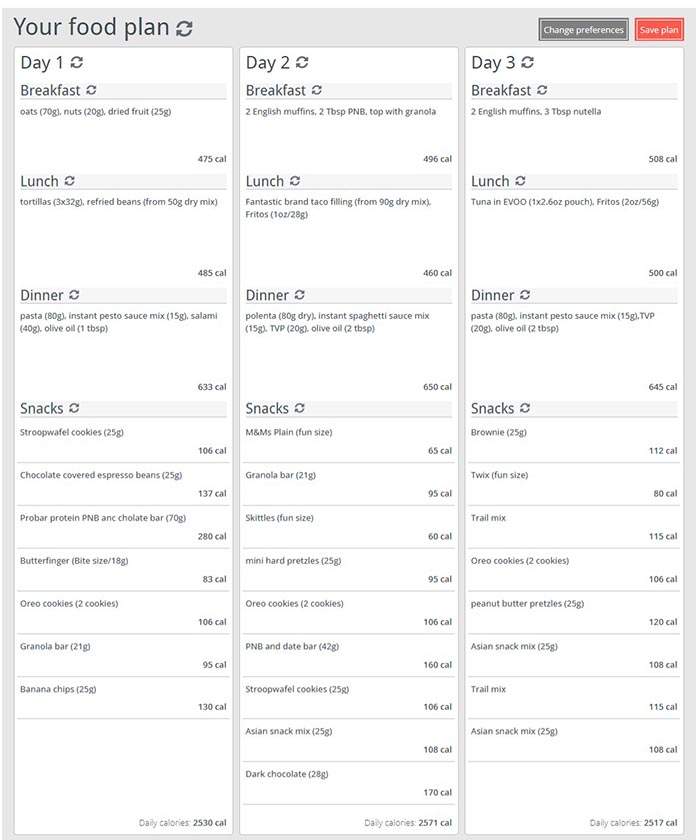
Example Backpacking Meal Plans
This first meal plan example is for 2 nights with my hiking partner and me. He needs roughly 2,800 calories per day whereas I needed 2,200. Everything for these meals was very calorie dense (averaging 130 calories per ounce). It ended up weighing just 77 ounces total (4.8lbs). That’s just 1.2lbs per person, per day.
Note that “X” is for meals that I ate at home or in the car before hitting the trail or after getting back.
This next backpacking meal plan was for me and my daughter. The same plan could work equally as well for one larger person doing more intense hiking because their daily calorie needs would be approx. 4,000 per day. I included some “luxury” foods like marshmallows. These aren’t exactly calorie dense, so it broke down to 115 calories per ounce for a total of 8.9lbs.
This final meal plan was for a 3 night trip by myself. I’m small, the hiking was pretty easy and the weather was warm, so I only needed about 2,100 calories per day. The total weight was 4.4lbs of food.
That calorie density is actually terrible (just ~85 calories per ounce). However, it was an impromptu trip so I didn’t have time to dehydrate the sausage sticks. The dried tomatos and mushrooms didn’t have many calories per weight, but they tasted damn good!
Not sure what to eat on the trail? Check out my ebook.
It has loads of delicious, calorie-dense dehydrator recipes plus tons of info about meal planning.


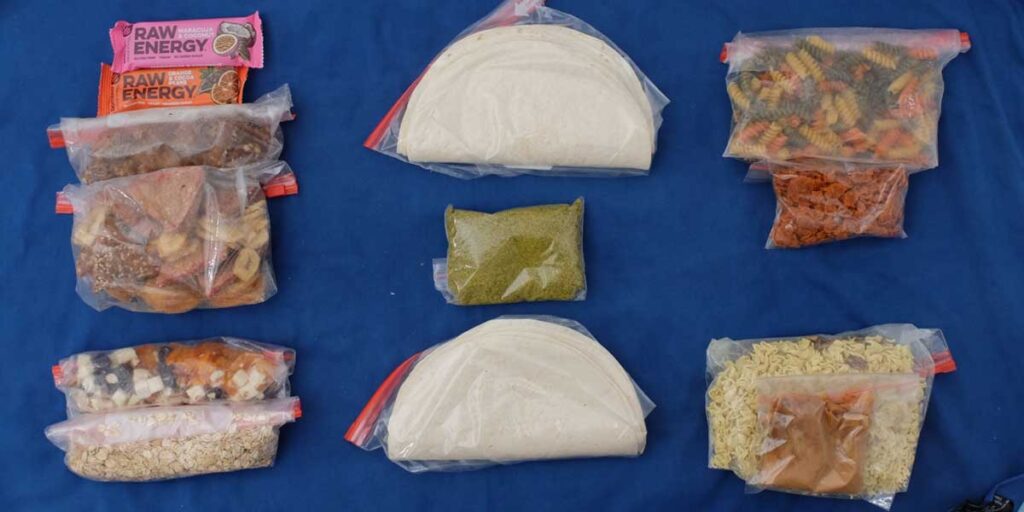
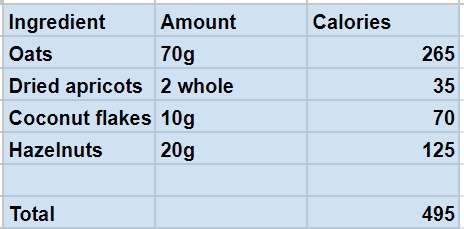
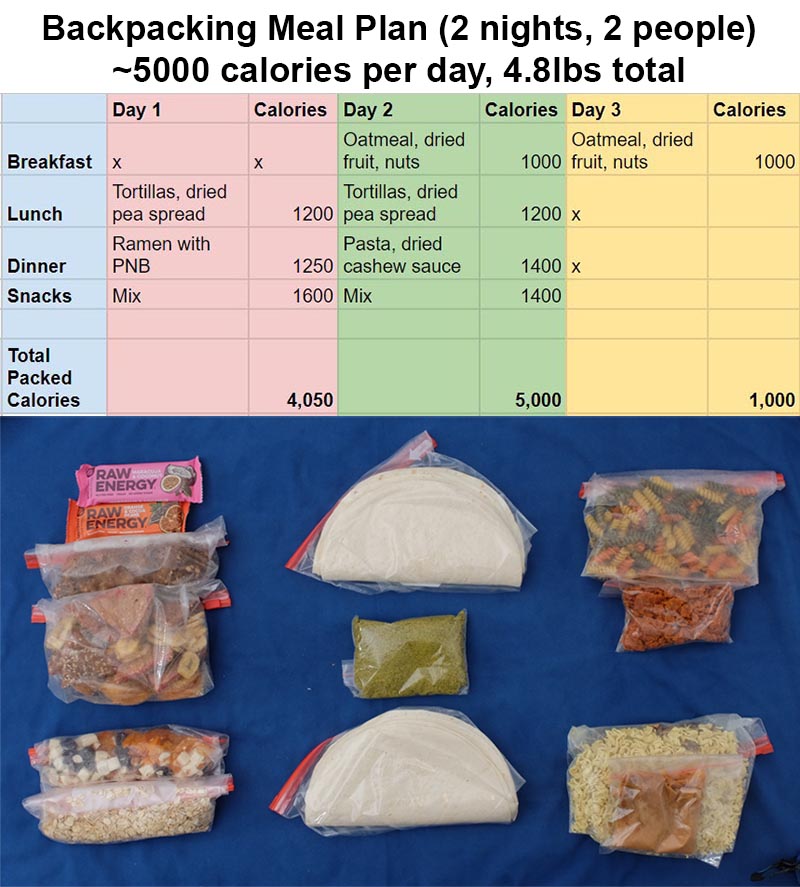
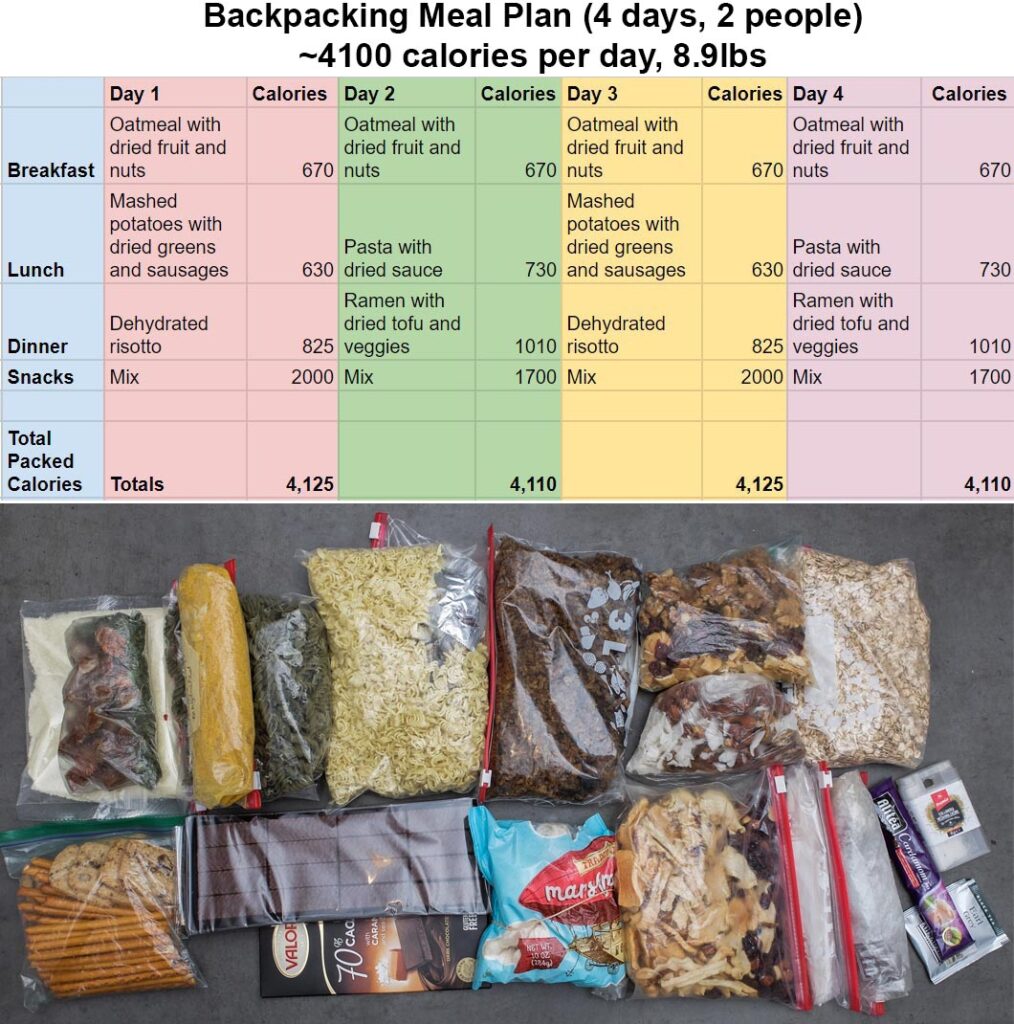
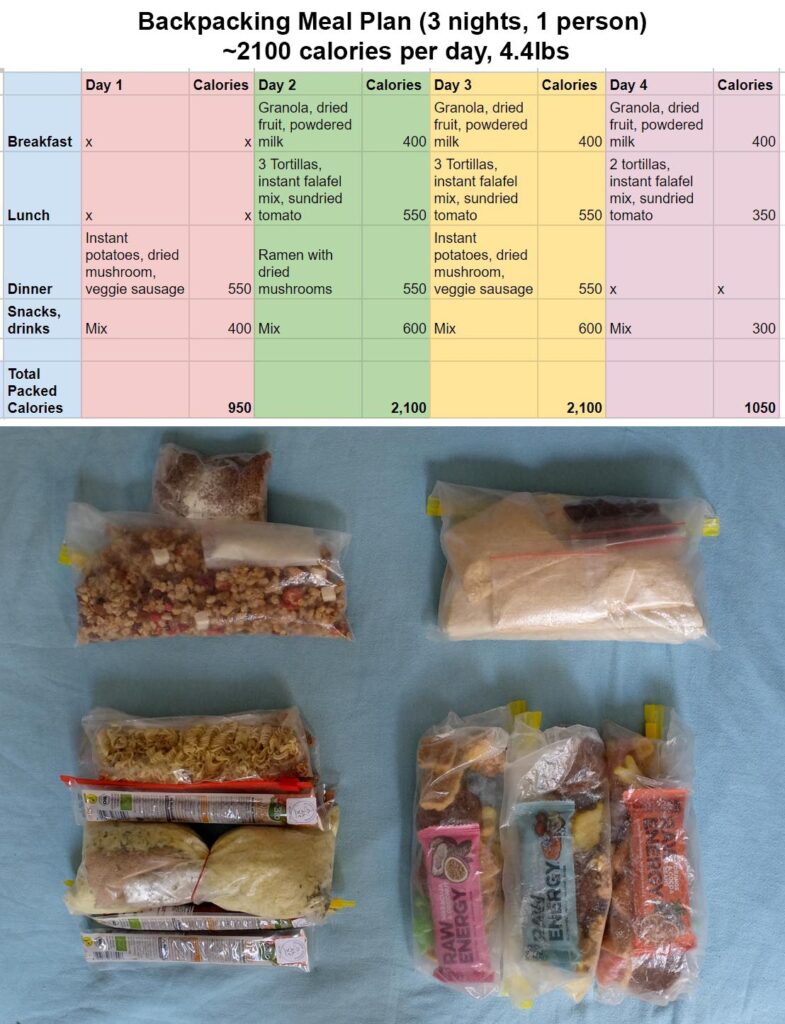
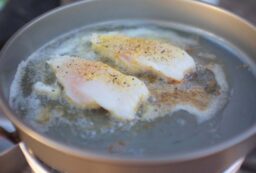
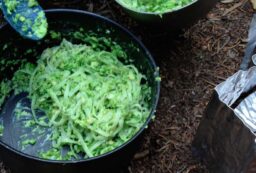
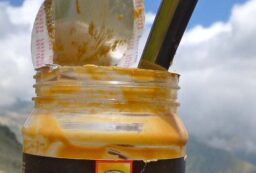






Post your comments